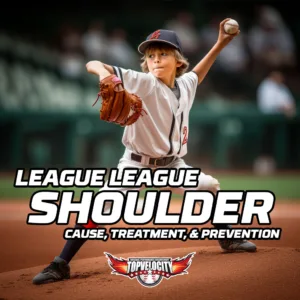 Little League Shoulder (LLS) is a disorder that has long troubled young athletes, particularly those who participate in throwing activities such as baseball. Despite its prevalence, there is still a major gap in our understanding of its diagnosis, management, and long-term implications. This systematic review will examine the symptoms, diagnostic techniques, treatment regimens, and return-to-sport protocols of LLS in order to consolidate current knowledge. The article synthesizes information from multiple research to provide a full picture of LLS, with an emphasis on male adolescent athletes who are most typically affected (Bednar et al., 2021). While there has been progress in managing the injury, the assessment also identifies areas where more research is needed to optimize treatment and reduce long-term damage. This page is a wonderful resource for healthcare doctors, coaches, players, and anybody else who is concerned about the health of young athletes.
Little League Shoulder (LLS) is a disorder that has long troubled young athletes, particularly those who participate in throwing activities such as baseball. Despite its prevalence, there is still a major gap in our understanding of its diagnosis, management, and long-term implications. This systematic review will examine the symptoms, diagnostic techniques, treatment regimens, and return-to-sport protocols of LLS in order to consolidate current knowledge. The article synthesizes information from multiple research to provide a full picture of LLS, with an emphasis on male adolescent athletes who are most typically affected (Bednar et al., 2021). While there has been progress in managing the injury, the assessment also identifies areas where more research is needed to optimize treatment and reduce long-term damage. This page is a wonderful resource for healthcare doctors, coaches, players, and anybody else who is concerned about the health of young athletes.
Understanding Little League Shoulder:
A Parent's and Young Player's Guide
What is the main problem?
The most prevalent issue that players have is soreness in the top region of their throwing arm, right around the shoulder. When they throw a ball this occurs. The fascinating part is that the pain does not occur at a specific time during the throw; rather, it can occur at any time. Some children experience this agony all at once, while others experience it gradually. The discomfort can persist anywhere from two weeks to a year.
What Does the Doctor Examine?
When doctors examine children for this ailment, they frequently discover that the sore area is sensitive to touch in the majority of them (around 67%). Some children (4%) have some edema, and a few (2.3%) have abnormal muscle development in the throwing arm's shoulder. Approximately half of the children have difficulty moving their arms normally. A lower proportion of people experience discomfort or weakness when bending their arms outward or inward.
 How Do They Know It's a Little League Shoulder?
How Do They Know It's a Little League Shoulder?
Doctors typically utilize X-rays of both shoulders to confirm the diagnosis of Little League Shoulder. Some people may utilize CT scans to see if the growth plate in the arm is separated more than typical. MRI scans are also utilized to obtain additional information, such as swelling inside the bone. In most situations, the throwing arm's growth plate appears wider than normal. In a few situations, MRI reveals problems such as bone enlargement and, in rare cases, fractures and cysts.
Are there any other tests for Little League Shoulder?
A few research examined how the arm bone (humerus) twists using modern imaging techniques such as 3D CT scans or ultrasound. They discovered that the arm bone in the throwing arm twists more than the arm bone in the non-throwing arm.
So, if you or your child is having pain in the throwing arm, it is critical to get medical advice. Understanding these symptoms and tests might help you speak more effectively with your doctor.
How to Handle Little League Shoulder:
A Step-by-Step Guide for Parents and Young Players
Old vs. New Methods for Little League Shoulder
Doctors' approaches to Little League Shoulder have evolved over time. Prior to 1998, doctors often suggested complete rest until X-rays revealed that the bones had finished developing or the player felt no pain. Some were also recommended to wear arm slings and possibly permanently shift their playing position.
After 1998, the advice became a little different. Complete rest is still advised, but only for a limited time, usually until the player feels no more pain. The most typical advice is to take a 4-month break from throwing, but some kids were told to rest for shorter durations, such as 1 to 3 months. Unlike in the past, players are now encouraged to participate in other sports and activities and are not required to give up their pitching position indefinitely.
Alternative Treatment Options
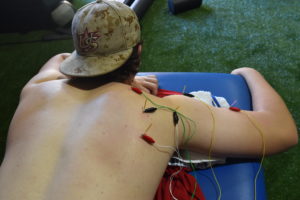 Physical treatment is an additional alternative, particularly for athletes who have difficulty moving their arms freely. Some children had specific home rehabilitation programs, and one was treated by a chiropractor.
Physical treatment is an additional alternative, particularly for athletes who have difficulty moving their arms freely. Some children had specific home rehabilitation programs, and one was treated by a chiropractor.
Training in the proper manner is also beneficial. One study found that training on proper pitching mechanics aided a player's recovery. Another player eased back into the sport by following a tight throwing routine. Unlike in the past, surgery is often not recommended for the treatment of Little League Shoulder.
Additional Modifications
To better control their condition, some players made minor alterations such as keeping to a pitching count limit.
As a result, the present strategy emphasizes targeted relaxation times as well as a more active engagement in other activities and therapies. This permits young players to re-enter the game without jeopardizing their health. If you feel your child has Little League Shoulder, talk with a healthcare specialist to determine the best treatment approach for them.
Returning to Play from Little League Shoulder:
What You Need to Know
 Criteria for Returning to the Field
Criteria for Returning to the Field
Depending on the study, the criteria for when athletes can resume throwing or other sporting activity change. The most prevalent criterion is that the player be free of pain. According to certain research, players should only resume throwing once medical scans confirm recovery. One player returned to pitching only when his arm's growth plates had completely closed.
Return to Playing Success
Excellent news! The majority of players are able to return to sports. Specifically, 94% were able to return to sports, and 92.5% were able to play at the level they were before the accident. Depending on the circumstances, it can take anywhere from two months to two years to return to sports.
Symptoms and Recovery
Almost all players, according to some sources, had no further symptoms. It took an average of 2 to nearly 8 months for symptoms to totally resolve. In many situations, scans such as X-rays and MRIs were utilized to double-check healing.
Keep an Eye Out for Recurrence
Some players' (about 19%) soreness returned after returning to the sport. The time it took for symptoms to return ranged between 4 and 8 months. As a result, athletes should use caution and regularly evaluate how they feel even after they return to play.
Other Dangers and Injuries
Aside from the Little League Shoulder, other issues or injuries could occur, such as the arm's growth plates shutting prematurely, changes in rotation, or even arthritis. Elbow problems, finger fractures, and ligament rips are other common ailments.
So, whether you're a parent or a young player, speak with Coach Brent Pourciau for a specific treatment and return-to-play strategy. It's best to stay careful and follow expert advise so you may enjoy the game without jeopardizing your health in the long term.
Discussion and Recap of Little League Shoulder:
What We've Discovered About LLS and the Road Back to the Field
 Management and Diagnosis
Management and Diagnosis
Little League Shoulder (LLS) is most typically identified in male athletes who complain of pain when throwing with their dominant arm. Physical examinations and radiographic testing are commonly used to make a diagnosis. The standard treatment strategy requires for players to refrain from throwing for four months, however they can participate in other sports.
The current treatment plans work.
Recent research indicates that LLS has a good prognosis. Unlike past methods that advised athletes to stop throwing for a whole season or even longer, current management programs now allow athletes to return to pre-injury status more reliably and quickly. A more conservative strategy in the past resulted in lengthier periods of rest, sometimes lasting until the athlete's growth plates closed.
Reporting Variations and Limitations
In the literature, there is a noteworthy lack of uniform guidance on effective coaching strategies for post-injury and graduated return-to-sport protocols. This gap must be filled in order to improve understanding and management of the illness. Furthermore, the majority of the research analyzed had low levels of evidence, rendering their results susceptible to prejudice.
Future Research Requirements
Future prospective research could help to shape our understanding of LLS. These should strive to standardize the diagnosis and management of LLS, with a particular emphasis on long-term results and appropriate return-to-play techniques.
Conclusion: Little League Shoulder
The current view is that LLS can be adequately controlled with a period of rest followed by a staged return to sport. Almost all of the cases evaluated demonstrated symptom remission, and a large number of them were able to resume their previous level of athletic involvement. However, further research is needed to improve treatment and preventative strategies, as well as to understand the potential long-term consequences of LLS.
By focusing on these areas, we can create a future in which young athletes can not only recover from LLS faster, but also possibly prevent it from happening in the first place, assuring a healthier, more satisfying athletic path.
Final Recommendation:
Attend a 3X Velocity Camp to Learn to Pitch Injury Free
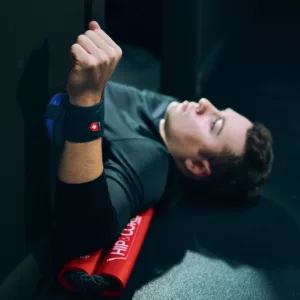 In light of the complexities surrounding Little League Shoulder (LLS) and the gaps in the existing literature, athletes, coaches, and healthcare providers can benefit from a comprehensive and evidence-based training program. We highly recommend attending a 3X Velocity Camp by TopVelocity for a holistic, science-backed approach to pitching.
In light of the complexities surrounding Little League Shoulder (LLS) and the gaps in the existing literature, athletes, coaches, and healthcare providers can benefit from a comprehensive and evidence-based training program. We highly recommend attending a 3X Velocity Camp by TopVelocity for a holistic, science-backed approach to pitching.
The 3X Velocity Camp focuses on teaching athletes how to pitch effectively while reducing the risk of injuries like LLS. Leveraging state-of-the-art biomechanical analysis, strength and conditioning protocols, and innovative drills, the camp's programs have been meticulously designed to enhance a player's natural abilities. More importantly, these programs are grounded in evidence-based practice, ensuring that athletes are receiving the most current and scientifically supported guidance.
At a 3X Velocity Camp, participants will gain:
- Advanced biomechanical insights into their pitching mechanics
- Personalized strength and conditioning plans
- Mental skills training to enhance focus and performance
- A thorough understanding of injury-prevention techniques
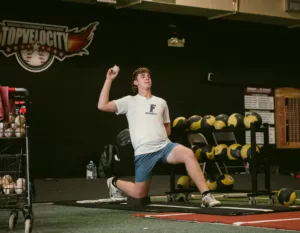 The knowledge and skills acquired at a 3X Velocity Camp can be transformative for athletes at all levels. Particularly for young athletes susceptible to conditions like LLS, this camp offers a unique opportunity to build a strong foundation in pitching that is both performance-enhancing and injury-minimizing.
The knowledge and skills acquired at a 3X Velocity Camp can be transformative for athletes at all levels. Particularly for young athletes susceptible to conditions like LLS, this camp offers a unique opportunity to build a strong foundation in pitching that is both performance-enhancing and injury-minimizing.
As our systematic review highlights, one of the significant gaps in the existing research is the lack of focus on proper pitching techniques and graduated return-to-sport protocols. The 3X Velocity Camp fills this gap effectively, offering athletes a scientifically-grounded framework to better their game and safeguard their future.
In conclusion, for those seeking a well-rounded, evidence-based approach to pitching that prioritizes both performance and long-term athlete health, the 3X Velocity Camp is an invaluable resource. We strongly urge you to take this proactive step in your athletic development and injury prevention journey.
Reference:
Bednar, E. D., Kay, J., Memon, M., Simunovic, N., Purcell, L., & Ayeni, O. R. (2021). Diagnosis and Management of Little League Shoulder: A Systematic Review. Orthopaedic Journal of Sports Medicine, 9(7), 23259671211017563.


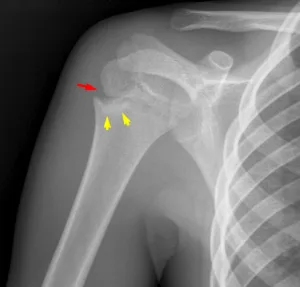 How Do They Know It's a Little League Shoulder?
How Do They Know It's a Little League Shoulder?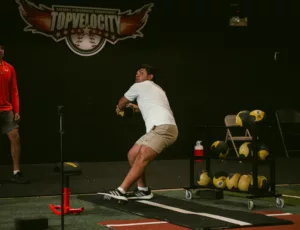 Criteria for Returning to the Field
Criteria for Returning to the Field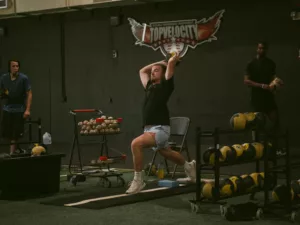 Management and Diagnosis
Management and Diagnosis